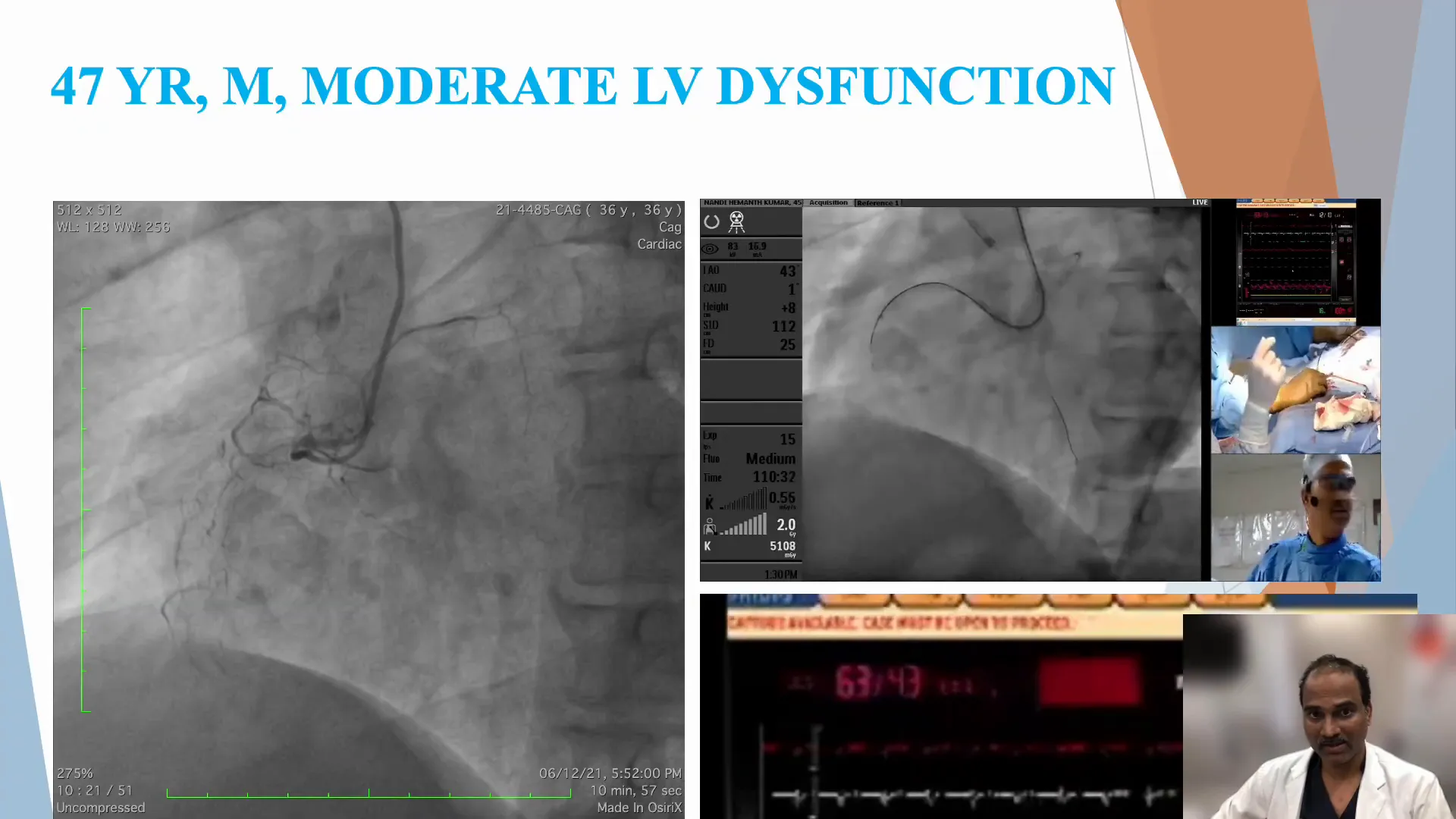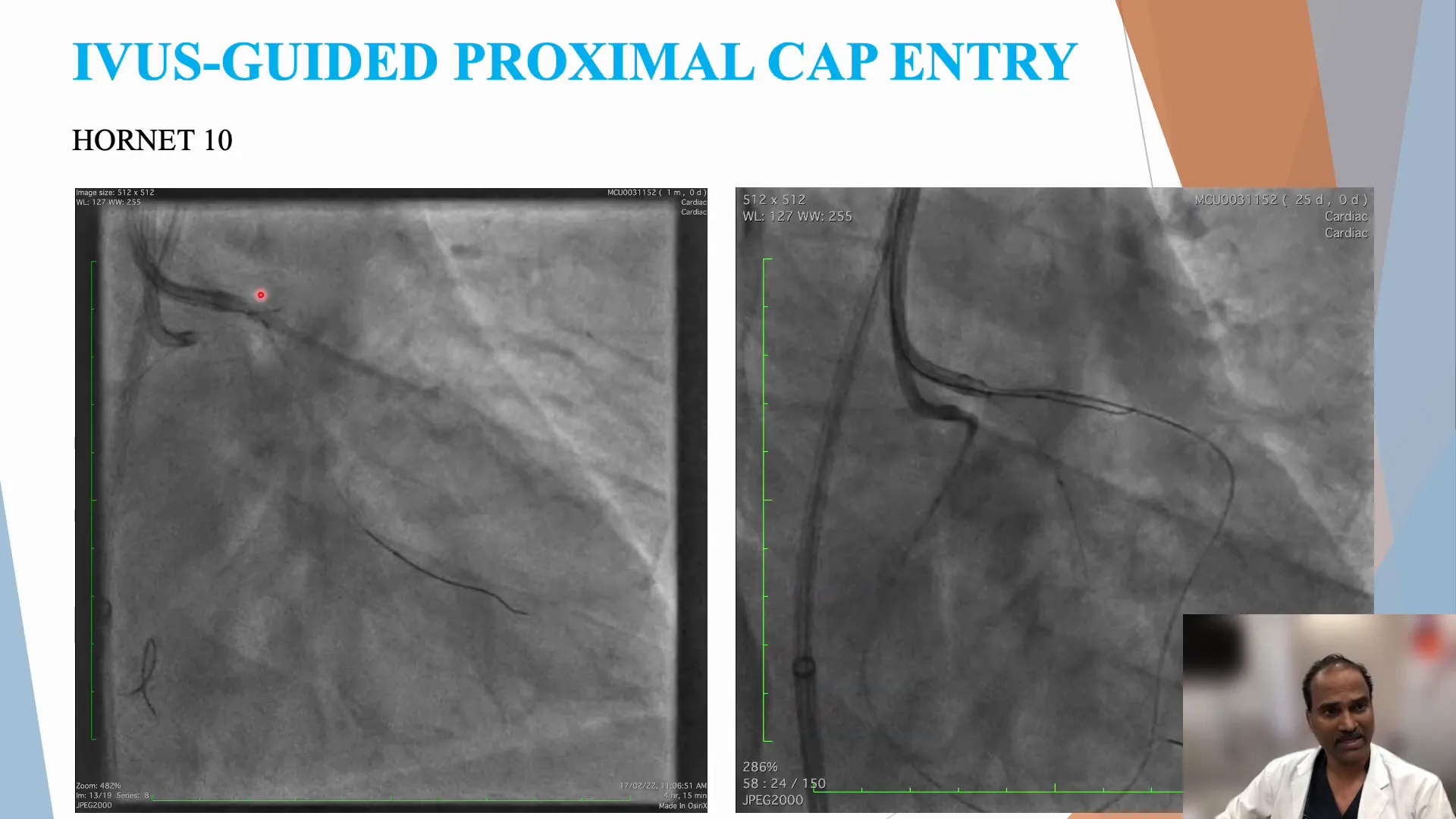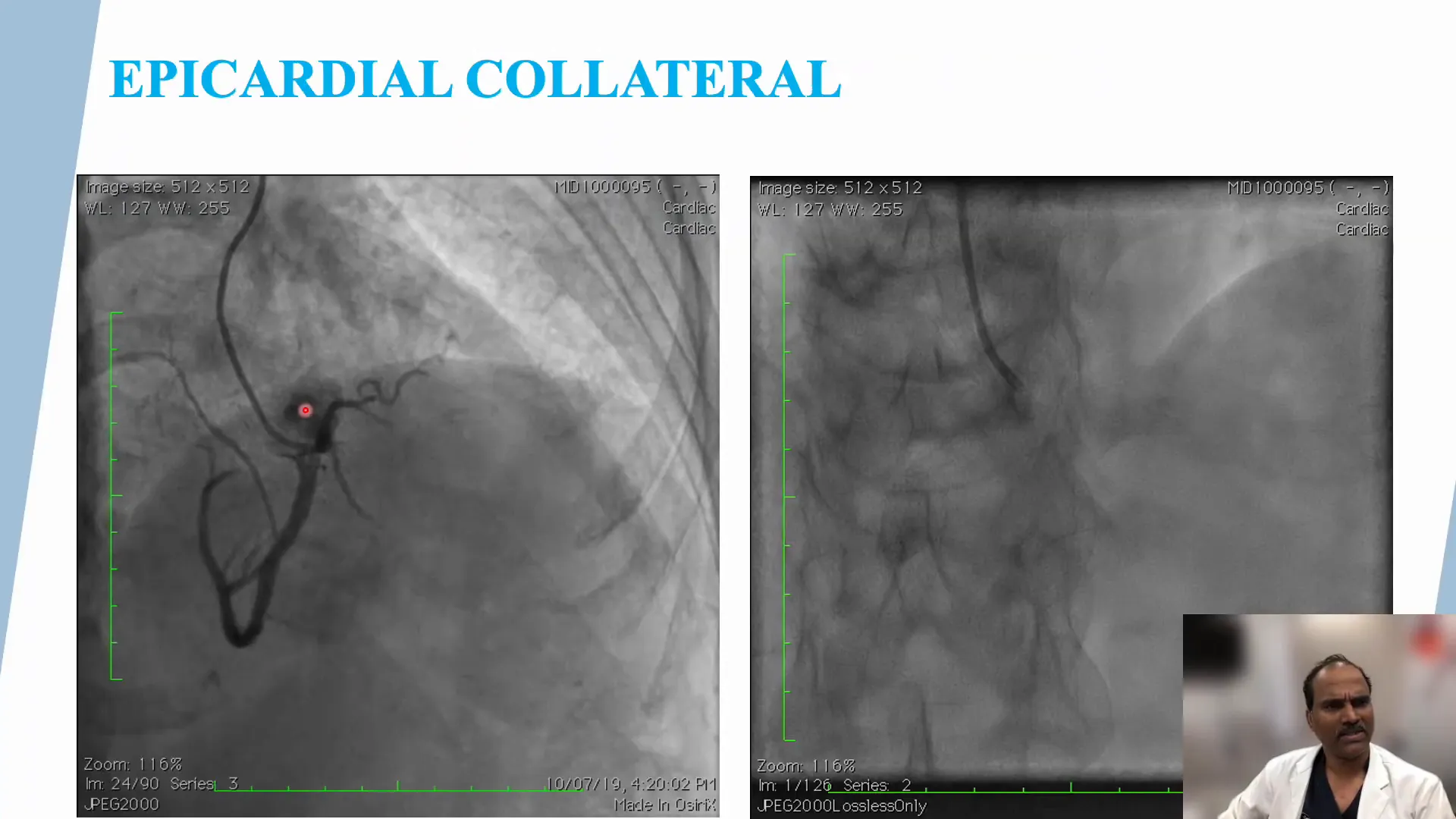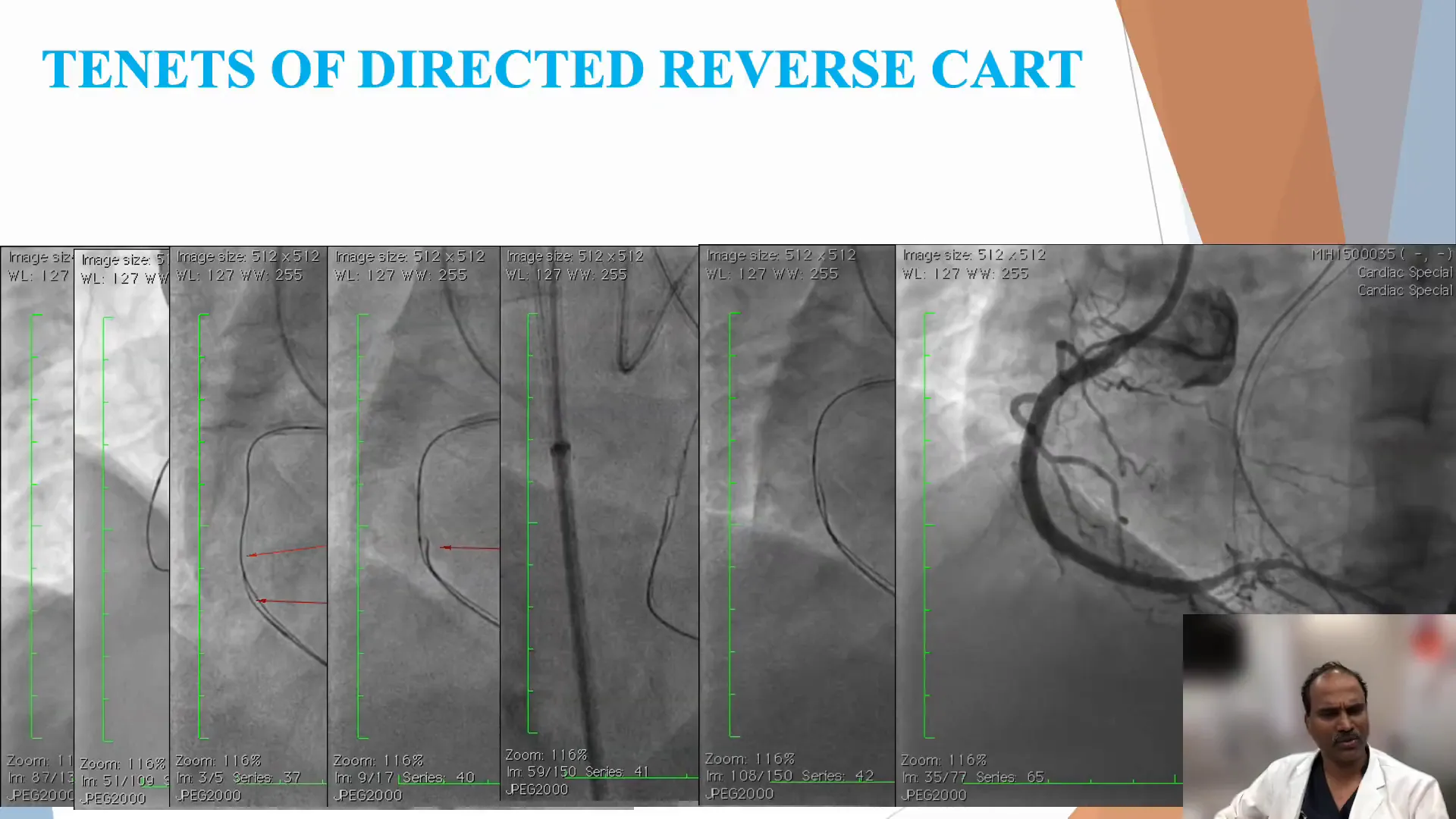03 Jun Mastering Retrograde Techniques: Tips & Tricks by Dr. Sharath Reddy Annam
In the world of interventional cardiology, retrograde techniques are a crucial aspect that requires precision and expertise. In this enlightening article, we delve into the intricacies of retrograde interventions, drawing insights from a live lecture by Dr. Sharath Reddy Annam. This comprehensive guide will explore the key strategies, considerations, and techniques necessary for successful retrograde interventions.
Table of Contents
- Understanding When to Go Retrograde
- Challenges with Hemodynamic Consequences
- Addressing Critical Donor Vessel Disease
- The Ambiguous Cap Scenario
- Interventional Collateral Selection
- Techniques for Crossing Collaterals
- Advanced Strategies: Reverse CART and Externalization
- Conclusion: Mastering Retrograde Interventions
- FAQs
Understanding When to Go Retrograde
Retrograde interventions are often considered when specific conditions are present. Dr. Reddy highlights three primary scenarios where retrograde approaches are beneficial:
- Ambiguous Cap: When the cap is unclear, making it challenging to navigate through traditional methods.
- Distal Vessel Visibility: When the distal vessel is not clearly visible in angiography.
- Interventional Collateral: When there is a good interventional collateral available.

These conditions necessitate a retrograde approach, sometimes even primarily. However, it’s essential to consider the potential hemodynamic impact, especially in patients with significant left ventricular dysfunction (LV dysfunction).
Challenges with Hemodynamic Consequences
Dr. Reddy shares a case where a long RCA CTO procedure led to a significant drop in heart rate during the externalization of the retrograde wire, necessitating immediate CPR. This highlights the importance of considering mechanical circulatory support (MCS) for patients with significant dysfunction.

Addressing Critical Donor Vessel Disease
Before embarking on a retrograde CTO intervention, it’s crucial to address any critical donor vessel disease. Dr. Reddy emphasizes the importance of treating significant lesions in the donor vessels to prevent complications during the procedure. Even if struts are across the septal, ensuring the safety of the procedure is paramount.
The Ambiguous Cap Scenario
Ambiguous caps present a unique challenge in retrograde interventions. When dealing with an oiled CTO, retrograde approaches without antigrade preparation can lead to severe complications, such as subintimal entry into the left main coronary artery (LMCA), potentially causing a collapse on the table.
Dr. Reddy advises an antigrade preparation with IVUS-guided cap puncture before proceeding retrograde. This strategy reduces the risk of creating complications similar to those caused by direct retrograde approaches.

Interventional Collateral Selection
Choosing the right interventional collateral is vital for the success of retrograde procedures. Dr. Reddy outlines various options, including venous grafts, epicardial collaterals, and septal collaterals:
- Venous Grafts: Considered the best conduits due to their straightforward nature and reduced complication rates.
- Epicardial Collaterals: While loops can be challenging, advancements in wire technology have made these routes more accessible.
- Septal Collaterals: Success depends on factors like takeoff angle, joining angle, and branching patterns.

Techniques for Crossing Collaterals
Dr. Reddy shares various techniques to successfully navigate and cross collaterals:
- Using double lumen catheters for difficult entry points.
- Employing a knuckling technique with hydrophilic wires for occluded venous grafts.
- Switching to micro catheters like Corset Pro, Caravel, and Finecross based on the situation.
These methods, combined with the right choice of wires and micro catheters, can significantly enhance the success rate of crossing collaterals.

Advanced Strategies: Reverse CART and Externalization
Dr. Reddy explains the Reverse Controlled Antegrade and Retrograde Tracking (CART) technique, which involves connecting the retrograde wire to the antigrade space. This method is crucial for successful retrograde interventions and requires precise execution.
There are different types of Reverse CART, including the Director Reverse CART, which avoids creating multiple wide tracks, thus increasing the success rate. In cases where the Director Reverse CART fails, conventional methods are employed.

Conclusion: Mastering Retrograde Interventions
Retrograde interventions are complex procedures that require a thorough understanding of various techniques and considerations. Dr. Reddy’s insights provide valuable guidance for navigating these challenging scenarios, emphasizing the importance of preparation, collateral selection, and advanced techniques like Reverse CART.
By mastering these strategies, interventional cardiologists can enhance their success rates and improve patient outcomes in retrograde interventions.
FAQs
What is the primary purpose of retrograde interventions?
Retrograde interventions are primarily used when traditional methods are challenging due to conditions like ambiguous caps, unclear distal vessels, or the availability of good interventional collaterals.
Why is addressing donor vessel disease important?
Treating donor vessel disease is crucial to prevent complications during retrograde interventions, ensuring a safer procedure.
What are the key challenges in retrograde interventions?
Key challenges include managing hemodynamic consequences, choosing the right collateral, and executing techniques like Reverse CART effectively.
How do advancements in wire technology aid in retrograde interventions?
Advancements in wire technology have made it easier to navigate complex collaterals, reducing complications and improving success rates.
What strategies are recommended for ambiguous cap scenarios?
For ambiguous cap scenarios, an antigrade preparation with IVUS-guided cap puncture is recommended before proceeding retrograde to minimize complications.
By understanding these aspects, practitioners can better navigate the complexities of retrograde interventions and achieve successful outcomes.


No Comments